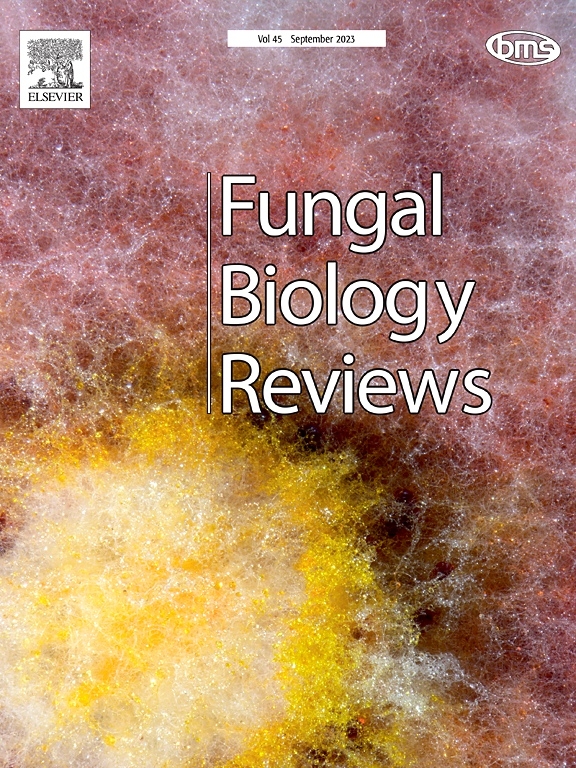Agaricales from Antarctica: Diversity of basidiomata, research challenges, and future perspectives in polar environments
IF 4.6
2区 生物学
Q1 MYCOLOGY
引用次数: 0
Abstract
Fungi of the order Agaricales, traditionally associated with forest ecosystems, have also been recorded in extreme environments such as Antarctica, where their diversity and ecological roles remain largely unexplored. This study compiles and analyzes existing knowledge on Antarctic Agaricales. Records reveal 21 species forming basidiomata in the region, including genera like Arrhenia, Galerina, Lichenomphalia, Omphalina, Pholiota, Rickenella, Rimbachia and Simocybe, typically linked to bryophyte mats and vascular plants. Recent studies have advanced knowledge by incorporating molecular techniques into traditional taxonomy. Despite these advances, the group remains taxonomically underrepresented due to challenges like scarce fertile basidiomata, cultivation difficulties and limited reference sequences. Future perspectives include applying high-throughput sequencing, increasing international collaboration and strengthening collections and expertise, which are crucial to overcoming current limitations. An integrative and collaborative approach can enhance fungal taxonomy and ecology while contributing to broader discussions on biodiversity, ecosystem function and biotechnological applications in polar regions.
来自南极的沉香菌:极地环境中担子菌的多样性、研究挑战和未来展望
传统上与森林生态系统有关的Agaricales目真菌也在南极洲等极端环境中被记录下来,但它们的多样性和生态作用在很大程度上仍未被探索。本研究整理并分析了南极栖类的现有知识。记录显示,该地区有21个物种形成了子孢子,包括Arrhenia、Galerina、Lichenomphalia、Omphalina、phooliota、Rickenella、Rimbachia和Simocybe等属,通常与苔藓植物垫和维管植物有关。最近的研究将分子技术纳入传统的分类学中,从而提高了知识水平。尽管取得了这些进展,但由于缺乏肥沃的担子瘤、栽培困难和有限的参考序列等挑战,该群体在分类上的代表性仍然不足。未来的前景包括应用高通量测序,加强国际合作,加强收集和专业知识,这对克服当前的局限性至关重要。综合和合作的方法可以加强真菌分类学和生态学,同时有助于更广泛地讨论极地地区的生物多样性、生态系统功能和生物技术应用。
本文章由计算机程序翻译,如有差异,请以英文原文为准。
求助全文
约1分钟内获得全文
求助全文
来源期刊

Fungal Biology Reviews
MYCOLOGY-
CiteScore
10.60
自引率
0.00%
发文量
36
期刊介绍:
Fungal Biology Reviews is an international reviews journal, owned by the British Mycological Society. Its objective is to provide a forum for high quality review articles within fungal biology. It covers all fields of fungal biology, whether fundamental or applied, including fungal diversity, ecology, evolution, physiology and ecophysiology, biochemistry, genetics and molecular biology, cell biology, interactions (symbiosis, pathogenesis etc), environmental aspects, biotechnology and taxonomy. It considers aspects of all organisms historically or recently recognized as fungi, including lichen-fungi, microsporidia, oomycetes, slime moulds, stramenopiles, and yeasts.
 求助内容:
求助内容: 应助结果提醒方式:
应助结果提醒方式:


